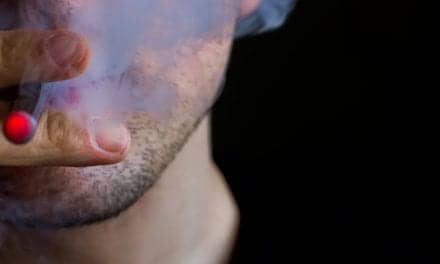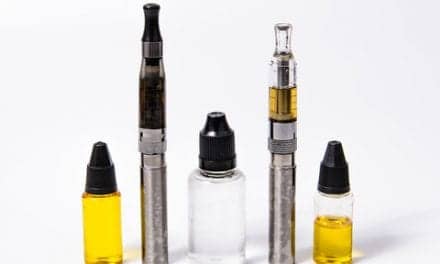 |
Some of the most valuable tools in assisting with a patient’s overall compliance with CPAP therapy are empathy, detective work, and creativity. It is easy, after time, to begin to lose a certain perspective when we treat our patients. We look for key words such as nasal dryness or claustrophobia. Some of the terms we use are not only new to some patients, but, many times, CPAP is something they never dreamt of having to integrate into their lives. The sensations and problems that present themselves can be very hard to explain in such “cookie-cutter” terms. This is where creativity plays a crucial role in understanding how important the patient’s problem is to them.
Imagine this: You begin to have headaches in the afternoon. You go to the doctor, and he refers you to an eyelid specialist. You go to this eyelid specialist; he schedules you to spend a day watching TV with a row of EMG leads taped across your forehead. When you go in for the test results, the doctor tells you that your eyes blink too often during the day, and that this could cause an aneurysm. The best therapy is to wear a battery-powered hat that stimulates the facial muscles and slows blinking.
As ridiculous a piece of fiction that this might seem, just imagine the people who have no knowledge of sleep disorders and do not know anyone with sleep apnea. They can potentially be led down the wrong path as well.
As new technicians, we are closer to being on the same level as our patients as far as knowledge goes. As experience sets in, we have a tendency to forget that every patient’s status is unique. We must keep our patients from becoming routine symptom presenters, and we must remember their individuality. Just as different people are comfortable with different types of masks, so too will they interpret their problems in different ways.
Studies have showed that 65% to 80% of patients reach at least a low standard of CPAP compliance.1 One study shows that an 85% compliance rate within the first 6 months can be achieved by utilizing a population-based follow-up and trouble-shooting program for patients having trouble with their therapy.1
Listen Up
The sleep professionals who have the most success with solving the problems of CPAP users are those who have the best listening skills. These are the ones who know what a person means when they say, “It makes me feel all …” and then wave their hands around near their neck.
Many articles and literature regarding PAP compliance come from sleep technicians who not only genuinely care for the overall health of the patients but also are there to help the process run as smoothly as possible.
It is a disservice to the patients when laboratories do not offer things like CPAP clinics for desensitization, do not properly educate patients, or do not offer a selection of masks. It is important to remember that these patients are with us for only 1 night, but the therapy is something the patient will be dealing with for possibly the rest of their life. Getting an effective titration is only the first step. Overall compliance statistics will start to rise only when more technologists are able to see the therapy from the patient’s perspective. Take this situation, for example:
A Case Study
“Jane Doe” cannot deal with her therapy, because when she wears the mask, it makes her “hair hurt.” If her solution is treated with empathy, creative thinking, and detective work, she will probably appreciate the attention and be more willing to settle down. If humiliation and talking down to the patient are the reaction from the technician, she will think twice before she brings up the next question. No response she gives or statement she makes should be returned with any hint of puzzlement or anything that could accidentally be interpreted as skepticism. The patient should be allowed to comfortably state what she has to say without altering her words due to fear of “giving the tech a hard time” or seeming “odd” to the strangers she is talking to.
Questions to this patient should be directed to rule out problems she was not describing and to shed more light on the problem she was having:
- Is this a new problem?
- Do you feel any dryness in your nose, mouth, or throat?
- Have you ever been claustrophobic?
- Are there any medical conditions or symptoms that aren’t in your chart?
- Does your hair hurt all over your head or just in one place?
- Is it a throbbing pain or a steady one?
- Is there anything you can compare it to?
The list goes on…
Some patients, possibly due to shyness, will not express their true feelings during the study. They will bring it up afterwards in the morning or when following up with the sleep physician. Some patients will state that they slept horribly at the sleep laboratory as compared to at home, because they are used to sleeping on three pillows as opposed to one. Sometimes, patients do not reveal how nervous they were during the study—at least not during the study itself. For a patient to feel comfortable enough to share these details, a great deal of empathy and detective work is required. (For Jane Doe, the anxiety caused by not being able to open her mouth and still more by exhaling against the pressure was causing tension in the back of her neck, which she had translated as her hair hurting.)
 |
Raising the Bar for Compliance
Every single patient we meet is a new adventure into compassion, empathy, and detective work, and offers an opportunity to make a difference in someone’s life. Education is but one valuable tool we have in learning to be better helpers to the CPAP user community, and the table is an example of a tool that might be used to train technicians on possible solutions to a patient’s problems. (Of course, in reality, this chart should be far more extensive and accompany thorough training.)
With enough empathy, creativity, and detective work in the sleep laboratory—and maybe extra effort on the part of the technician—compliance will rise. With the addition of advances in education and technology, CPAP compliance can possibly rise to 99.9%. On this journey, all the creativity, empathy, and detective work we can call upon can only help to bring smiles and increased quality of life to all we can. That is what a true sleep professional should be striving for.
Zack Freeman, RPSGT, became registered in September 2006. He is involved in training and management for a four-bed sleep center in Saginaw, Mich.
Reference
- Sin DD, Mayers I, Man GC, Pawluk L. Long-term compliance rates to continuous positive airway pressure in obstructive sleep apnea: a population-based study. Chest. 2002;121:430-5.








